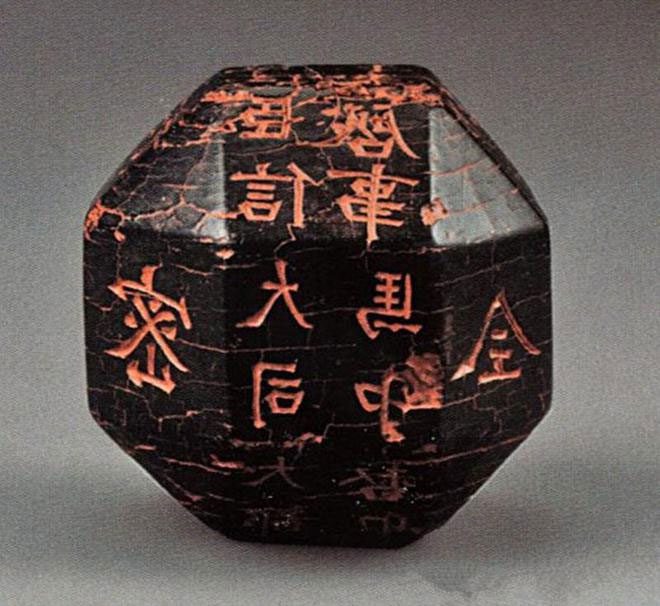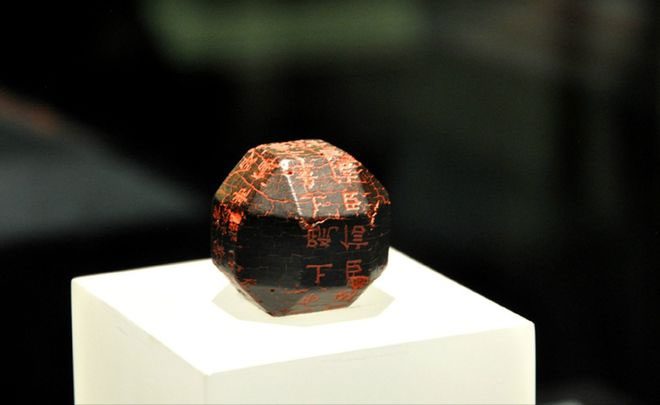In 1981, in Shaanxi Province, China, a boy discovered a “strange” treasure and brought it to the Shaanxi History Museum. It wasn’t until ten years later that the secrets of this treasure were revealed.
The Boy Who Found a “Chunk of Coal” and Brought It to the Museum
In November 1981, a schoolboy wearing a uniform visited the Shaanxi History Museum, believing he had found a “historical treasure.”
“Hello, sir, I just found something that looks very much like a treasure; could you please check it for me?” the boy said.

“The black lump” the boy brought for verification.
Shaanxi Province (China) is rich in ancient cultural relics, having unearthed many ancient tombs and valuable treasures from various historical dynasties. Therefore, the museum staff remained calm while receiving information from the boy.
<pHowever, everyone was startled when the boy pulled out the “treasure” from his backpack. It was not a shiny, sparkling object like jade or gold; it resembled a lump of coal—black and hard as stone.
Upon examining the “lump of coal,” museum staff discovered several anomalies. While its exterior was pitch black, it was surprisingly bright, and ancient characters were engraved in red on its surface. Preliminary assessments by the museum staff confirmed that this was certainly not coal but rather a historical artifact.
Experts Puzzled for a Decade
The museum experts had never seen an artifact with such a shape or similarity. To clarify its origins, they began researching its background. This artifact stands 4.5 cm tall, weighs approximately 75.7 grams, and has 14 faces inscribed with ancient characters. Its coal-like appearance is due to it being made from a coal essence, also known as coal jade.
All the research conducted by the experts hit a dead end due to insufficient data and limited historical records.
By 1991, the artifact was displayed in an exhibition, attracting much attention due to its unique shape. After applying various advanced technologies for analysis, the secrets of the stone gradually began to unravel.
Expert Conclusion: “This is a national treasure, unique in the world”
In 1991, archaeologist Wang Hangzhang was invited to an exhibition at the Shaanxi History Museum. While passing through the display area, he noticed the peculiar black artifact and could not help but stop to admire it. Discovering that the artifact’s information was not well-defined, he took a keen interest and decided to research its origins himself.

It turns out this treasure is the “multifaceted seal.” The seal has a total of 16 faces, of which 14 are engraved with characters.
The faces are categorized into three types:
- Type 1 for official documents, consisting of 6 faces.
- Type 2 for books, consisting of 4 faces.
- Type 3 for correspondence, consisting of 4 faces.
In other words, in ancient times, there was a person who had to handle a large amount of documentation daily, holding many important positions. After extensive research, he ultimately discovered that the owner of this seal was Du Guo Xin—a general and one of the Eight Pillar Generals of the Western Wei dynasty in Chinese history. He was also known for having an “astute eye for marrying off his daughters,” with all four of his daughters becoming empresses. His eldest daughter married Emperor Wu of Northern Zhou, who was posthumously named Empress Mingjing. His second daughter, Du Guo Jia La, married Yang Jian and became Empress Wenxian of the Sui dynasty. His fourth daughter married Li Bing, the son of one of the Eight Pillars of Western Wei, Li Hu, and gave birth to Li Yuan, who was later posthumously honored as Empress Yuanzheng.

The owner of this seal is Du Guo Xin.
From this, it can be inferred that the “multifaceted seal” dates back to around 540 AD. The “multifaceted seal” is still displayed in the Shaanxi History Museum, and every visitor who sees it is reminded of the illustrious life of its owner—General Du Guo Xin.


















































